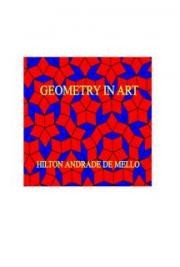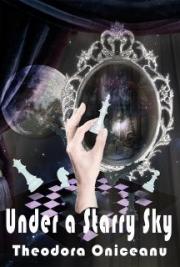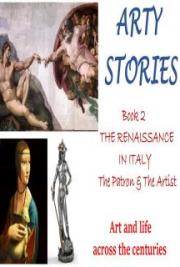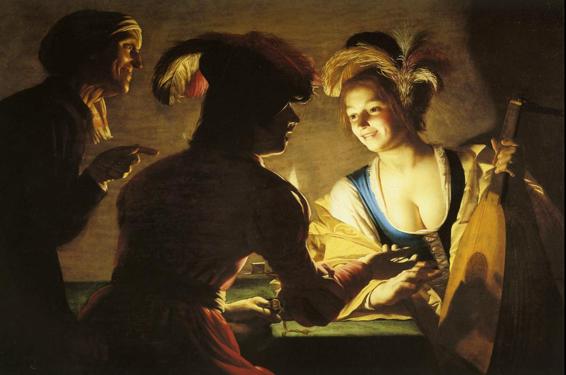
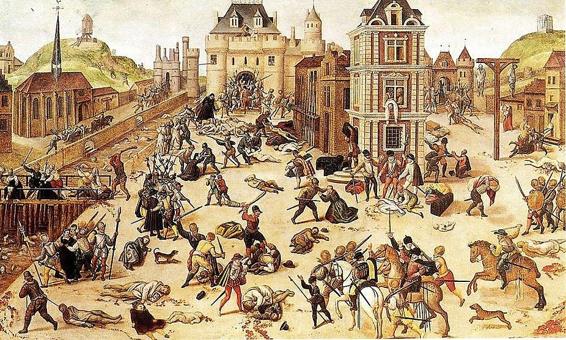
ARTY
STORIES
Book 3
THE FOUR PRINCES
War, Terror & Religion
Art and life
across the centuries

Ian Matsuda, FCA, BA (Hons)
for
Noko
Copyright
Ian Matsuda, FCA, BA (Hons), 2017
All rights reserved. No part of this publication may be reproduced, stored in retrieval system, transmitted or utilised in any form or by any means, electronic, mechanical, photocopying, recording or otherwise, without written permission from the publisher or licence holder https://www.artystories.org email: info@artystories.org
The Procuress, Gerrit van Honthorst, 1625
St. Bartholomew Massacre, Paris, 1572
‘ARTY STORIES’
Art & Life across the centuries
‘Seeing people’s lives brings their art to life’
See the stories that made the art – the times – the place – the people
Book 3: THE FOUR PRINCES - War, Terror & Religion
A refreshingly entertaining introduction to the world of art through 5,000 years of tumultuous history This third book tells of four Princes, born in a single decade at the end of the 15th C, who shaped the countries of Europe, but who unleashed a terrible terror on all people, as they waged wars against each other and against religions –
Protestant, Catholic and Muslim. Mercenary armies roamed across countries to prey on village and town, destroying all in their path. The impoverished people, already fighting hunger and disease, were put to the sword and their homes to fire.
The Netherlands was first to break free and enjoy a new wealth in the golden age of Dutch art.
Ideal for student and art lover alike
Supported by the Arts Council, England as:
‘creative and engaging for young people’
‘the opportunities to stimulate interest and imagination are evident’.
Centuries of great art are a gift to us all
Books in this Series
Book 1 Egypt - Greece - Rome Empires come and Empires go 2 The Renaissance in Italy The Patron & The Artist 3 The Four Princes War, Terror & Religion 4 Northern Europe Revolution & Evolution 5 The American Dream Depression to Optimism
6 The Modern World The ‘…isms’ of Art
7 Past Voices Stories behind the Art All free e-book download
https://www.artystories.org
Book 3
THE FOUR PRINCES
War, Terror & Religion
CONTENTS
• Four Great Princes who forged modern Europe
• Religion leads to division and Wars
• The Princes go to war – and bring terror
• Diplomacy brings peace
• Palaces, chateaux and wives
• Thirty years War of terror and death
• The Dutch Golden Age of Art
• Summary
• Sources of information
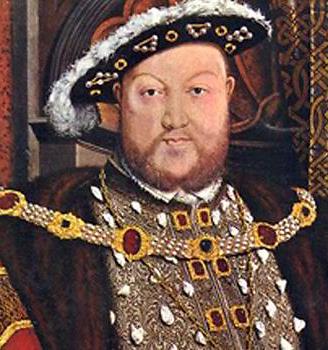
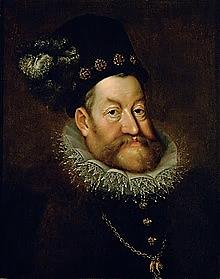
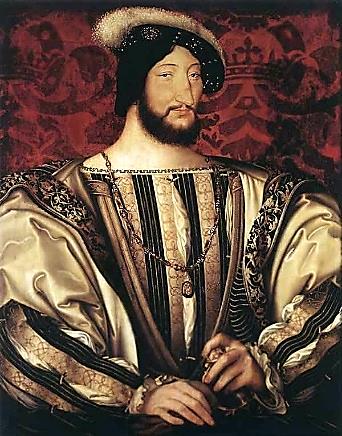
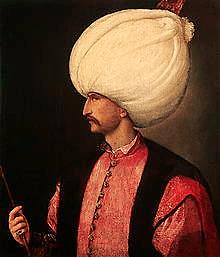
Four Great Princes who forged modern Europe
Four giants who shaped the societies of a Europe we know today and so the art and history that was to follow.
As the golden time of Renaissance Art reached its peak, (Book 2), Europe plunged into a time of terror where armies of mercenaries roamed across the Continent. Emperors, Kings and Princes waged wars for kingdoms and power, under the banner of religion. The first decades of the 16th century (1500’s) saw the deaths of Michelangelo, Leonardo da Vinci, Raphael and then an uprising against the Pope heralding rigid Catholicism.
Europe was in for a time of great change and terrible wars, big and small, as four great rulers - all born in the last decade of the 15th century - were to change the face of Europe and of the Americas. As autocratic rulers, they wielded power across western Europe and would wage war between themselves, switching alliances as their personal ambitions dictated. They rode on the wings of religious fervour, but death and destruction followed in their wake as towns and cities were ransacked and put to the sword.
Henry Vlll, King of England Francis 1, King of France Charles V, Holy Roman Emperor Suleiman the Magnificent Born 1491, had six wives Born 1494, dashing and rich Born 1500, serious, stammered Born 1494, Ottoman Rich from the monasteries Fought for French Territory Ruled vast areas of Europe Ruler of Eastern Europe Avoided European wars Explored North America Explored South America Intelligent and cultivated Spent vast monies on status Renaissance art patron Religious Catholic Swept Islam into the West Died age 55 Died age 52 Died age 58 Died aged 71
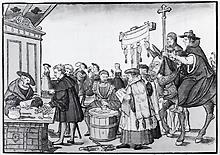
Unlike previous dynasties where art served to shape culture and religion and so society, these rulers used war to reshape Europe. People were crushed for religious belief or for just being in the wrong place at the wrong time.
These rulers used art for personal ends and specifically in architecture, to underline their authority and power.
Great palaces, chateaux and mosques were built from the great wealth flowing into their coffers. A wealth kept from the rural poor who had no voice and lived under the heel of their masters – in fear.
Far from the democracy of Ancient Greece. But, where did all this start?
Religion leads to division and Wars
This was a time of great change as Europe emerged from medieval times with a great wealth accumulated in Spain and Portugal from the New World in South America. This fuelled new opportunities for rulers and merchants alike. A cluster of national states developed with all the rivalry that comes between them. Merchants and bankers fed on the feuding princes, accumulating new wealth from wars and new trade. The Catholic church looked to strengthen its hold across Europe, building a vast new St Peters in Rome – displaying their wealth and power in artistic commissions, with the Sistine Chapel.
But the vast majority suffered poverty. Any voice they had was
ignored by the church who controlled their spiritual life, which
formed such a large part of the common man’s world. But the
church controlled any prayer to God, setting themselves up as
the doorway to heaven and imposing strict rules as to the word of God in peoples’ lives. They portrayed a hell that awaits those who go astray. Prayers to God were made only through the priest who
demanded money to pray on behalf the people, effectively paying
their way into heaven. (termed ‘indulgences’)
A Catholic sale of indulgencies, c.1530, Jorg Breu, the Elder of Ausburg
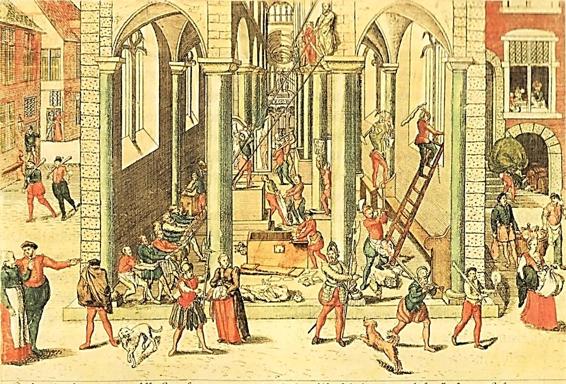
This corrupt and even debauched church grew rich and the people grew poor. A recipe for discontent and revolution and in 1517 a German monk – Martin Luther – gave a focus to their call and challenged the monopoly of the Catholic Church with a new Protestant Church. Rather than accept the mystery of Latin, Luther had the bible translated into German and by means of the newly invented printing presses, distributed bibles and leaflets to his fellow citizens. The resulting civil uprising ignited wars across Europe, that were to change the face of the Continent and bring devastating suffering to village and town alike. Revolution in the name of God.
Catholic churches were taken over, allowing the people the
freedom to pray directly to God. But their anger was also
directed at the corruption in the priesthood.
People broke free smashing the rich religious images and
the renaissance art, often throwing out the priest and
converting the church for Protestants. With this new power
people then looked to overthrow their rulers and a ‘Peasants
Revolution’ swept through Germany, Holland and
Switzerland - establishing Protestantism, dominant to this
day. But the price of freedom was to prove costly.
Engraving: Destruction, The First of our Lady, Antwerp, 1566, Frans Hogenberg The peasants lacked combat experience or even a unifying structure and were beaten down by the armies of the local Princes. These local princes then saw the opportunity to take over the collection of monies by the Church and raise taxes themselves with which to field armies and grab territory from their neighbours. The age of mercenary armies had begun, recruited from a mix of nationalities across Europe. They were soon to grow into conflict between empires – the empires of the four great princes. Much of the carnage to come was waged in the name of religion as a new Protestant Church struggled to break away from the dominant Catholic Church.
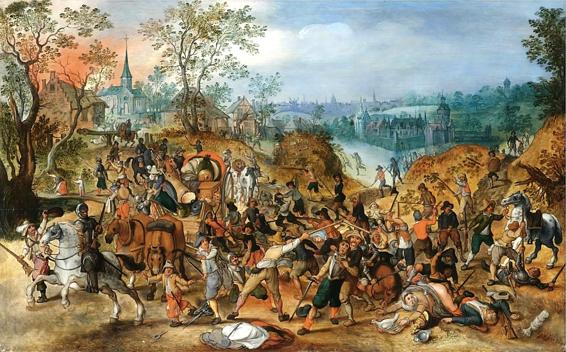
These armies; fighting under the banner of religion; often went unpaid and unfed, resulting in bands of starving mercenaries roving across Europe, pillaging and killing wherever they went in the most dreadful ways.
Undefended villages and towns fell to their sword, unable to defend themselves against a professional army, who in turn were regarded by their leaders as ‘the scum of the earth’. (1) They destroyed everything in their path.
A Landscape with Travellers Ambushed, Sebastian Vrancx
But worse was yet to follow.
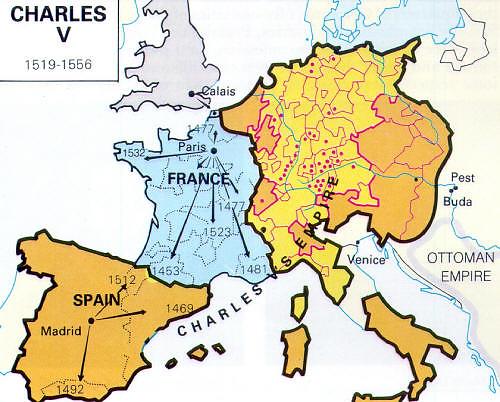
The Princes go to war – and bring terror
These four great rulers pushed at each other’s borders and none
more than Francis l. France was surrounded by the global empire of Charles V that stretched from Spain and Portugal, through the
Netherlands and Germany and on into Austria, in the vast and strong Austro-Hungarian empire. (shown in orange in the map)
Battles were won and lost, but Charles gained the upper hand, not just from his vast territories, but also from the wealth of gold that he brought from the New World of the South Americas. In contrast
Francis called on his noblemen to fight these wars, in a long running dispute over territories in an Italy that was dominated by Charles.
Henry and Suleiman pushed at the edges.
Milan was a key centre of power and both Francis and Charles had both ruled the city at one time or another. In 1525 Francis despatched an army of 40,000 to seize back the area. Poor strategy left his army surrounded and cut to pieces by the smaller Imperial forces of Charles, whose muskets and cannon overwhelmed the pike-staffs wielded by the French. A new era in warfare had arrived. Francis was captured and taken for ransom, signing a peace treaty that he had no intention of observing and leaving his two sons as hostages, for four long hard years.
At this point Charles, with no money left to pay his troops, seems to have diverted his attention elsewhere. This left a huge army of men seeking to obtain revenge and booty and they chose to plunder the nearest richest city –
Rome. Rome’s defences were weak and only the Pope’s personal Swiss Guard fought bravely, but were slaughtered to a man on the very steps of St. Peters. (even now this tradition of support is held with the Swiss Guard still standing in costume at St Peters) The hungry and angry soldiers burst in on panicked families and began an orgy of killing in a bloodbath described as ‘one of the most horrible in recorded history’. (2)
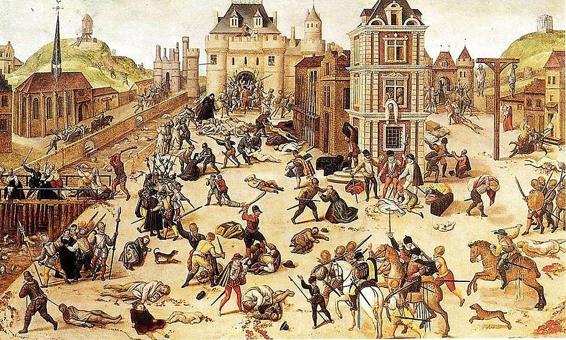
Hospital patients, orphans - even nuns were taken and sold or killed and the city destroyed, with streets strewn with corpses in a boiling sun. Some 12,000 were buried or thrown into the Tiber river where an epidemic of plague broke out on their rotting bodies and starvation reduced the population by half.
St. Bartholomew
Massacre, Paris, 1572
Francois Dubois
When cities were sacked, soldiers ran wild as in this engraving of a massacre in Paris. This destruction at the centre of the Catholic world inspired retaliation by the church through the Catholic ‘Jesuits’. They brought a passion and further terror with their ‘Inquisition’, wielding ‘prayer book and sword’. In Spain the inquisition was to lead to death and torture of ‘heretics’. The Jesuit passion inspired Catholics to squash protestants at home and establish themselves in the New World of South America, where Spain dominated. (3)
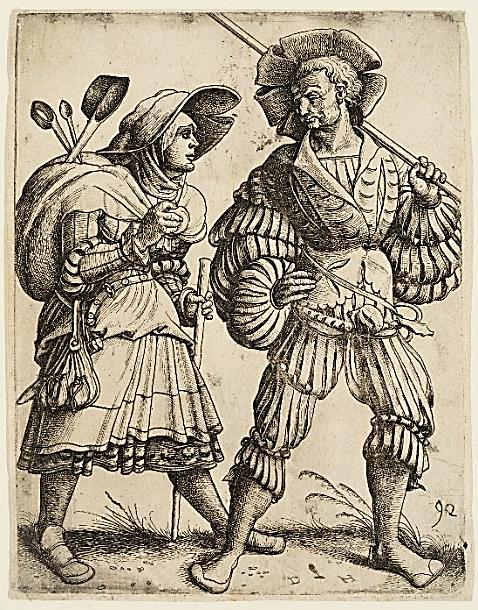
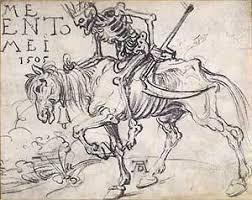
In Rome the Pope was now also a prisoner of the Imperialists and Charles demanded monies and lands for his release. all to further reduce the power and authority of The Pope. It was then that Henry Vlll sought to obtain the Pope’s permission to divorce his wife Catherine, against Catholic law. But the Pope was under the power of Charles who was both a devout catholic and nephew to Catherine. Henry was way down on the Pope’s list whose concern was to placate and crown Charles as Holy Roman Emperor with dominion over Northern Europe.
So inadvertently the sack of Rome was to lead to Henry Vlll breaking from Rome and reforming England to the new Protestant Church. Henry went on to dissolve the monasteries, so that he could confiscate their huge wealth to lavish on war, architecture and art. All this would sow the seed for the persecution and execution of Catholics in England for years to come. So, a band of frustrated and hungry soldiers in Italy were to ultimately lead to the English Reformation and to the Church of England. Events can have unexpected Consequences.
Soldiers, as mercenaries from various countries, had no uniforms and wore any clothing, only being distinguished by something like a coloured sash. People at that time tended to wear layers of clothing against the winter cold and women and children joined these military caravans.
But hunger could render these fine
men destitute, as portrayed in this
imaginary etching by Durer from
1505 of ‘Death Riding’.
Soldier and his Wife, Daniel Hopfer, 1470-1536
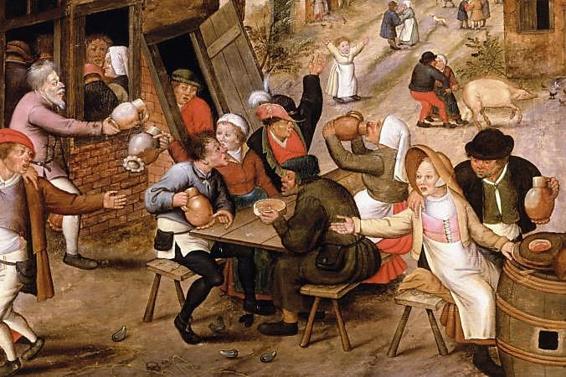
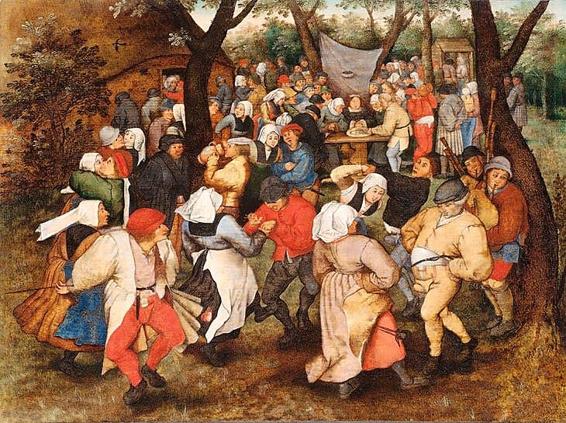
Such was the contempt for these soldiers that one French General, finding a bridge blocked by a slow-moving train of 800 camp followers of women and children, ordered that they all be thrown off the bridge so that his army could move forward more rapidly. (3) They were just ‘canon fodder’ and ‘the scum of the earth’.
Most were to die of disease and hunger, rather than in battle. Ironically, these men had joined the army due to famine at home and although some were forced or ‘pressed’ into service, they were deemed to be ‘the excrement of the land’. To be a peasant in the 16th century was to live in fear, hunger and poverty.
But there were times of peace when villagers could enjoy
themselves. Beer or cider was often safer to drink than water
and drink it they did!
‘Peasants Making Merry’, (detail), Breughel the Younger, 16th C
Medieval villagers were keen dancers, be it a
celebration or just a Saturday night. By this time the
range of instruments that we know today, was available
but cost could limit a village to a lute (a ‘fat’ guitar), flute
and perhaps a drum.
Pieter Brueghel the Elder, ‘Wedding Dance’, 1566
Peace was sometimes realised through diplomacy when Princes needed each other, as with Francis and Henry.
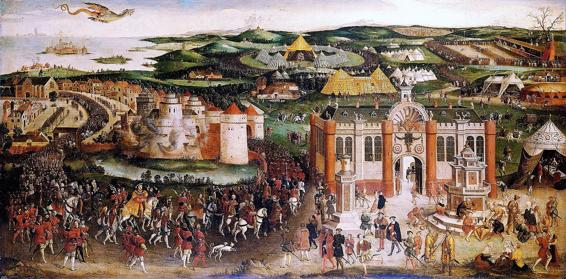
Diplomacy brings peace
There were times when diplomacy was used to settle differences and also to enhance the status of Kings, as in the case of Henry and Francis in ‘The Field of the Cloth of Gold’, when each sought to outdo the other. (4) The Field of the Cloth of Gold, the arrival of Henry V111 in 1520 painted c.1545
The English and French noblemen traditionally hated each other and this was not helped by Henry’s wife being the aunt of Charles V, the sworn enemy of Francis. So, whilst Francis sought a treaty with Henry to protect his border, Charles sought a treaty with Henry to prevent him supporting France, whose lands he surrounded. But Henry wanted to keep his territories in France of Calais and Bordeaux, so preferred an agreement with Francis.
Henry and Francis agreed to meet and each looked to impress the other with their power and wealth. Henry arrived with 5,000 men and three thousand horses and also 6,000 craftsmen who were to build his temporary campsite. They built a fantastic ‘fairy tale’ castle and a Great Tent made literally from a cloth of gold. Not be outdone Francis also had a tent with cloth of gold and 400 other tents, all sumptuously decorated.
They met in June 1520, each attended by 500 horsemen and 3,000 infantry. At the sound of a great gong, the whole company stood still and Henry and Francis charged at each other, reining in at the very last moment and leaping off to heartily embrace to rousing cheers.
For two weeks they feasted, jousted and ‘made merry’, each offering valuable gifts. Both monarchs returned to their treasury impoverished, with a need to rebuild the wealth which was effectively wasted as no treaty was to be signed until five years later. But both returned to countries rich from their taxation systems.
Palaces, chateaux and wives
The population of France was growing rapidly to 20 million, twice that of England. Francis had great sources of income from taxes which he was to lavish on his chateaux and on art of the Renaissance, convincing Leonardo da Vinci to retire to France. He transformed the Louvre from a medieval fortress into a vast palace. He issued a decree that one copy of every book published in France should be held centrally, that still functions today.
Henry also had a vibrant economy which was augmented by seizing the lands and wealth of the monasteries, although destroying their treasures of art in the process. He was a collector of tapestries amassing some 2,000, many of which equated to the cost of a battleship. (5) Henry would commission tapestries to portray himself in great battles or hunting scenes, all to impress when taken around the country to warm cold walls. But much of his wealth was to go on the navy with 50 new ships and like Francis, on great palaces used as hunting lodges.
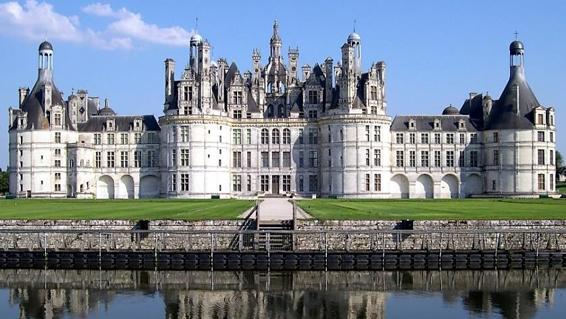
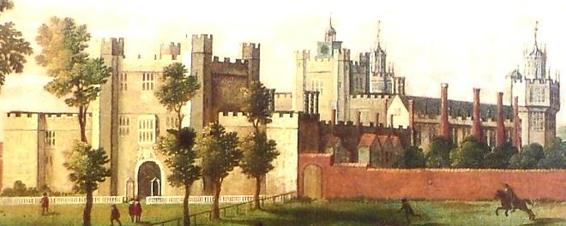
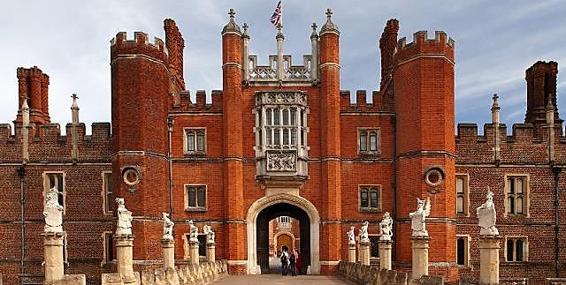
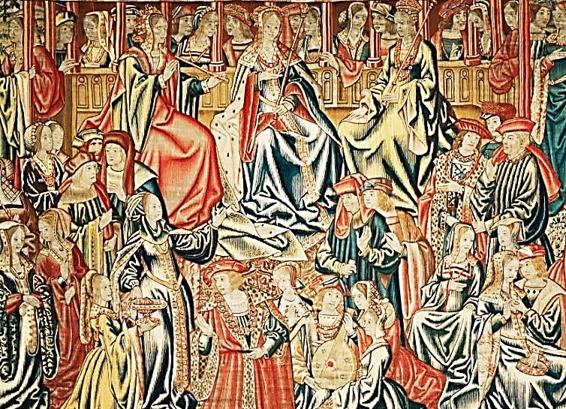
Francis 1,Chateau de Chambord, The Loire, France, 1519 Henry V111, Nonsuch Palace, Cheam, England, 1538
Chambord in the Loire valley still exists in splendour to day, whilst Nonsuch palace in Surrey was later given by King Charles ll to his mistress, who in 1682 had it pulled down for the building materials to pay off her gambling debts. Not one stone remains. However, the greatest of the Tudor palaces remains – Hampton Court. Housing a thousand courtiers requiring two vast kitchens, a thousand cooks, servants, laundry and cleaners, were all needed. Henry had built a toilet block with 28 seats for courtiers by the river called ‘The Great House of Easement’.
Hampton Court, taken by Henry from his Catholic cardinal in 1529 Tapestry, Life at the Tudor Court, Hampton Palace
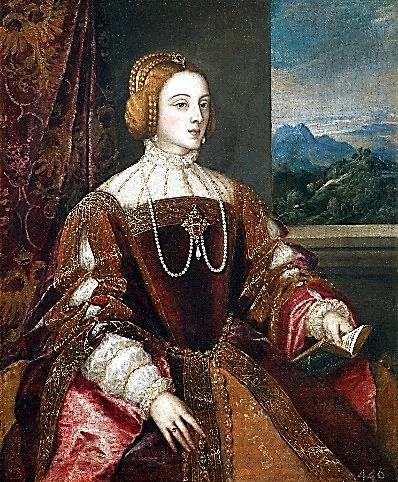
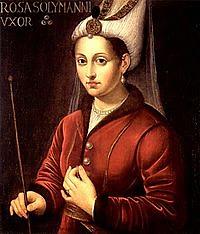
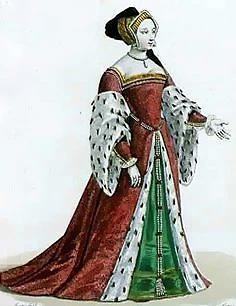
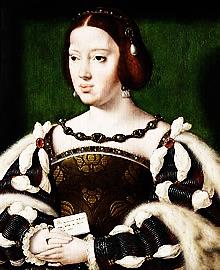
Henry is remembered for introducing the protestant Church of England and for his wives. Francis is loved by the French today for his swagger, multi coloured silks and velvets - and for his charm.
Neither found love in marriage with Henry’s six wives
and then Francis with two. They both formed political
marriages. Henry with Catherine, aunt to Charles V and
Francis with Eleanor, sister to Charles.
Anne Boleyn, 6th wife of Henry, V111 1533-36, executed
Eleanor of Austria, Queen of France 1530-1547
Charles V was concerned with holding his vast empire together and with Protestants in the North and Catholics in the South, he spent one third of his life travelling between. But he loved his frail wife Isabella to distraction, although she died aged just 35. Towards the end of his reign, he abdicated his throne to live in a monastery, to quietly end his days.
Isabella of Portugal, Holy Roman Empress 1530-1539
In the Ottoman Empire, Sultan Suleiman’s love life was one
of romance as he raised his wife ‘Roxelana’ (the Russian
woman’) from slavery after her capture in infancy, to become
a ‘Sultan’ of his Empire. She was known as ‘the merry
woman’ with good humour and playfulness, playing haunting
love songs on her guitar. (6)
Roxelana, Hurrem Sultan 1533-1558
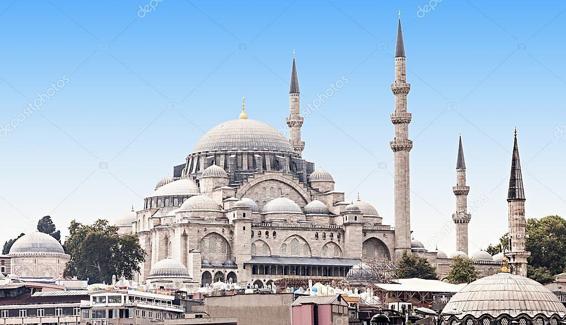
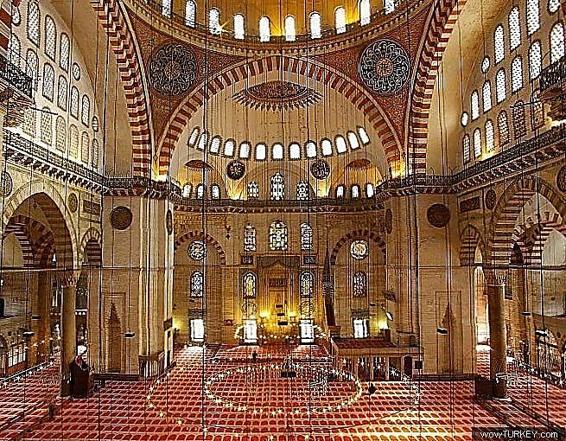
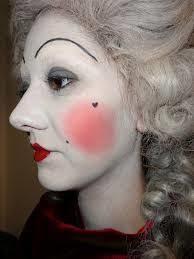
The makeup used by these women hadn’t changed dramatically since Ancient Greece.(Book 1) They still used lead in ointments that were believed to be effective in ‘removing stains, polishing, cleaning and bleaching the face’. As in Greece, white skin was seen as reflecting a higher status of not working in sun in the fields and also to suggest cleanliness and purity. The effect was further magnified by a red paint derived from mercury for lips and cheeks. Women suffered dangerous levels of lead and mercury poisoning that could produce hair loss, inflamed eyes and blackened skin. What price beauty! Even Henry’s daughter Elizabeth 1, was to wear a wig!
Suleiman was busy building his vast empire, establishing Muslim societies in his newly won Christian countries. He set to building 79 mosques and 34 palaces to show the far reaching power of his empire.
He was a man who looked to raise his people - founding 22 ‘free’ schools and colleges in Constantinople alone, with countless others attached to mosques. His legacy was to live on and with the beauty that he encouraged in the arts, can still be seen today in his great mosque in Istanbul, Turkey.
Suleymanie Mosque, Constantinople (Istanbul), 1550 Interior showing the typical tiles, free of any icons (statues)
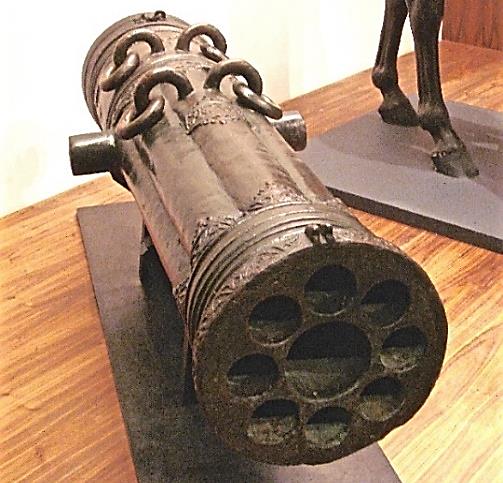
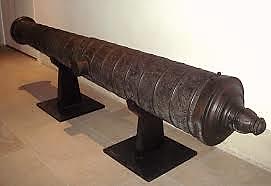
Suleiman left a rich culture and cohesive society in an empire that was to continue for three and a half centuries, where both Christians, Jews and Muslims were free to worship.
But Suleiman had a cruel side. Aged just 25, he immediately exterminated his entire family on his accession to the Ottoman throne. Throughout his life he ordered many beheadings, massacring defeated armies, with a pyramid of 10,000 heads presented to him after his victory at Budapest in 1526.
This Battle of the Mohacs for Budapest, was a great Ottoman victory over the armies of Charles V whose army of 30,000 troops was met by 50,000 Turks and; more importantly; 300 cannons. These huge 19-ton cannon could launch a cannonball of iron, one metre in diameter, a mile or more, with a terrifying explosion on impact. (7) The battle lasted just four hours and was fought in heavy rain. With the withering artillery fire of the Turks, the Hungarians caught in mud were decimated and either surrounded or fled for their lives.
Ottoman 4m Cannon & Volley gun 16thC
The battle put an end to Hungary as an independent state for generations and even today the loss is remembered in the Hungarian phrase used whenever there is a domestic disaster: ‘but no matter, more was lost on Mohacs field’. Suleiman destroyed the palace in Budapest with its magnificent collection of Renaissance art.
The Ottoman army was later to be turned back at Vienna and in bitter cold and snow, made a terrible and costly march back to Constantinople. Budapest was to mark the limit of the Turkish advance into Northern Europe.
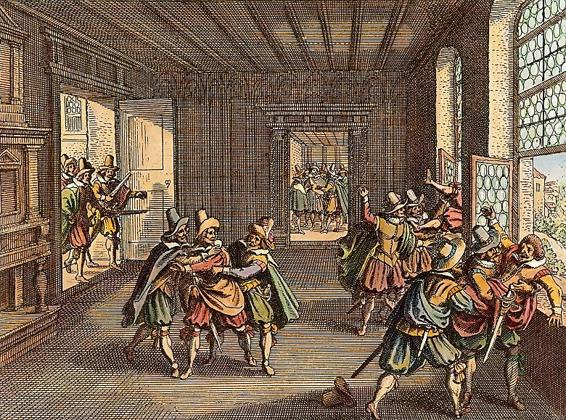
Each of these four Princes left their mark on society and its culture, particularly religious. This is still reflected today, with a Protestant society in the north, a Catholic in the South and Muslim in the Middle East. Mosques, chateaux and palaces bear their signature culture, moulding the Europe that we know today.
Thirty years War of terror and death
The wounds these four rulers inflicted in the 16th century were to sow the seeds in the 17th century for the ‘Thirty Years War’ of 1618-1648. A terrible 8 million were to die from war, famine and plague in a European population one tenth of that today. So equivalent to 80 million today, which is more than today’s populations of either England or France. In parts of Germany the population fell by between one half and two-thirds in one of the most destructive conflicts in human history. (8)
Initially a war between Protestant and Catholics, it gradually grew to a general conflict involving most of the European great powers. Large mercenary armies were formed and the war re-awoke the rivalry between France and the Habsburg Empire that had earlier caused so much terror under Francis l and Charles V.
There were the same atrocities as in the previous wars with the
pillaging of captured towns, but on a vaster scale. The Bohemian
protestants in Germany had risen in revolt, ignited by hurling two emissaries from the Habsburg Empire from a window in Prague,
then part of Bohemia. The emissaries survived, but this action was to spark a conflict across the whole continent of Europe.
‘The Defenestration of Prague, 1618,’ Matthaus Merian the Elder, 1646
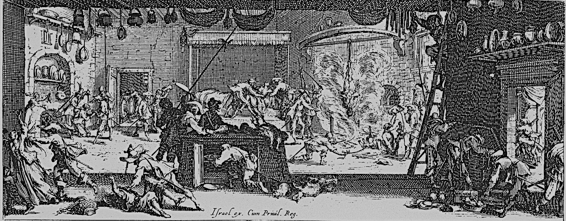
In Northern Europe the siege and overwhelming destruction of the city of Magdeburg in central Germany in 1631, was fought between Catholics of the Empire looking to crush the revolt of the Protestants of Bohemia. The protestants had previously been granted religious freedom by the Empire, but a host of treaties were drawn and torn. Three months of siege and plague had already reduced the starving population of 25,000 who faced an army of 24,000 and soon a further 40,000 would arrive - three times the city’s population. Artillery had pummelled the city for three days. Magdeburg was finished and the town was to be overcome and raped.
‘The Miseries and Misfortunes of
War’ Claude Callot, 1633
The night watch had failed to see the besiegers preparing to scale the city walls and the mercenaries hungry, angry and unpaid, streamed in to wreak dreadful violence and looting on the population. Successive bands broke into houses to demand valuables and as later bands then found nothing, the households were put to the sword.
Fires were lit and as a wind sprang up in the clustered buildings, the city was reduced to ashes with mercenaries also caught in the flames. Some 20,000 perished; 80% of the population; with the river ‘choked with the corpses of victims’. The city was reduced to rubble and a census made just 3 years later, recorded just 449 residents.
The wars bankrupted countries, enabling the Dutch to gain their independence, heralding their ‘Golden Age’.
The Dutch Golden Age of Art
With the Dutch Protestant revolution against Spain finally won by 1648, the Netherlands blossomed in trade, science, military and art, stamping their superiority on both Europe and the world. The first multi-national companies were formed and chief amongst them was the Dutch East India Company which traded with most of south-east Asia until being forced out of India by the British, until finally concentrating on what is today called Indonesia. With a seemingly insatiable demand from across Europe for spices, they imported spices in bulk from the Far East, generating huge profits. This enabled the Dutch in turn to trade and purchase enormous amounts of grain and wood from Eastern Europe. This helped them avoid the impact of successive bad harvests and starvation that at this time were commonplace in France and England. The Netherlands prospered against their neighbours.
With this commerce, rich merchants, bankers and a new middle class, came to dominate art. With the austerity of the Protestant church limiting displays, these new patrons determined new styles. These were often in portraiture of themselves, but scenes from everyday life were also popular. As the market broadened and everybody sought different work to impress in their homes, a new ‘decorative’ genre appeared of still life using fruit, flowers and dead game. With the power of the Dutch navy that protected the worldwide trade, seascapes became popular. The Netherlands was a varied, sophisticated, educated and powerful country, with a Protestant work ethic, where music rang through cities and towns, the lifeblood for their art.
Great artists came to the fore of which Rembrandt and Vermeer are perhaps the most famous, but there were hundreds of artists. It has been estimated that over 20 years, with art readily available, some 1.3 million works were sold at the many markets (9, with the average house displaying some 10 paintings. Their work portrays life at that time and became a great source of a new nation’s pride, that still echoes today. Leading public bodies also commissioned paintings which were publicly displayed, lifting the culture of cities like Amsterdam and Antwerp and bringing an increasing sophistication to society, establishing their status above the rest of Europe.
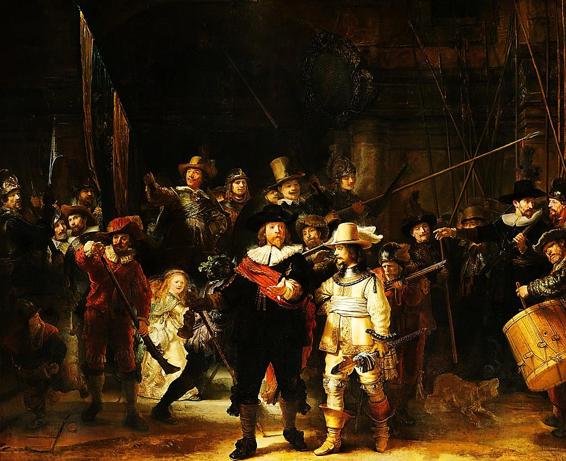
This society was monitored by a civic
militia that patrolled streets, often
inevitably full of sailors letting off
steam after long voyages. Leading
civic figures contributed to the cost of
art, as in this huge work of the
influential militia where they are
depicted to the fore. (3.6m by 4.4m).
The militia Captain is about to lead
his well- armed company out,
supported by his Lieutenant, with all
exhibiting swagger and style. Both
are bathed in light with a woman
kneeling behind, holding a dead
chicken signifying a defeated
adversary. This was a prestigious
company and their painting was hung
in the city banqueting hall to elevate
the status of leading civic figures.
The Night Watch, 1642, Rembrandt,
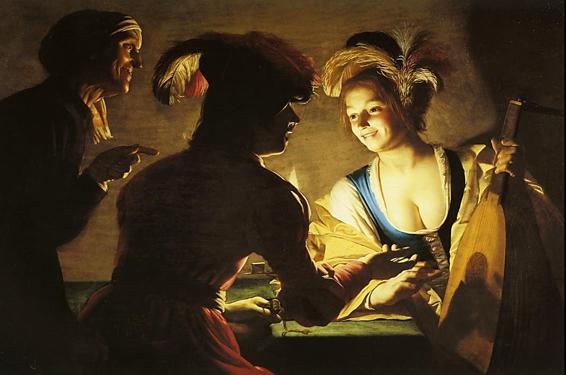
The streets that they patrolled
included prostitution that,
although criminalised,
flourished and the militia often
turned a ‘blind eye’ to their
activities. But it held a romantic
illusion in many residents’ eyes
and prostitutes were portrayed
as beautiful seductresses with
beautiful clothes, in stark
contrast to the old and ugly
prostitutes operating in real life.
Women were depicted as
seducers, inspired by the devil
and men as fools, seen here
offering payment. Prostitution
continues in Amsterdam’s ‘red
light’ district to this day.
The Procuress, Gerrit van Honthorst, 1625
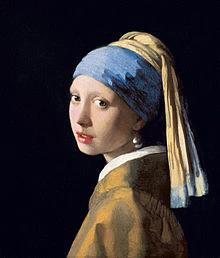
Most paintings were hung in private homes and their romantic
style is also found in other ‘wishful’ works. Here the artist has caught the young girl’s intimate gaze, directly at the viewer, as she turns to look over her shoulder, with her lips parted as if
she is about to speak. He has combined the innocence of
youth with the exotic in a gold and blue turban and a rich gold,
oversized dress. A dark, plain background brings the viewer’s
attention exclusively on her.
Vermeer gave no title for the work and various titles have
been given, such as Lady with Turban or just Young Girl.
Today we highlight the pearl earring, even if it is a minor item.
Its personal value to the family is shown that on his death his
wife went to great lengths to keep the work from his creditors.
Girl with a Pearl Earring, Johannes Vermeer, 1665
So, war and terror gave way to great wealth and great art, as Societies developed new cultures with which to determine themselves and the sophistication of their nation. Cultures that are national characteristics today. As trade and middle classes grew, so the public demand grew for works that was their art and reflected their lives.
The example given by the Dutch in the ‘romantic’ representations of real life, was to influence the romantic period in England, where an art of the people was brought to new public galleries. Then later adopted in a radical new impressionism in France, where the public adopted their own interpretation of real life, in the face of the bourgeois ‘establishment’. (Book 4) Industrial and civic revolutions were to bring great change.
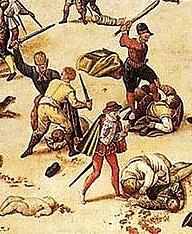
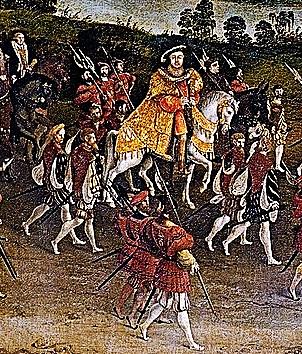
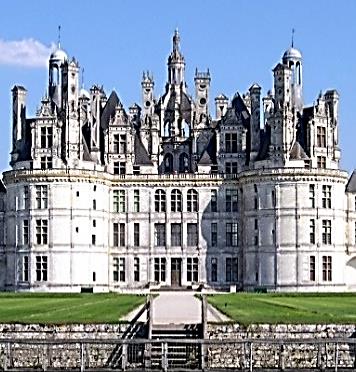
Summary
At the beginning of the 16th Century, the Four Princes dominated Europe, forming alliances and then bursting into war, leaving unpaid and unfed roving bands of mercenaries trawling across Europe, pillaging and killing wherever they went. Villages and towns fell to the sword and to the disease and hunger that followed in its wake.
Attempts were made at peace through diplomacy, where the Princes Henry Vlll and Francis l were equally intent on displaying their wealth and power to each other in the magnificence of the Field of the Cloth of Gold, with a cast of thousands.
Both went on to use this wealth to build great palaces and chateaux to impose their authority and culture on the masses. Francis was a patron to the Renaissance bringing Leonardo da Vinci to France, whilst Henry in England indulged his wealth on tapestries and building a navy to protect his shores.
In the Ottoman Empire mosques and schools were built to change societies and their culture
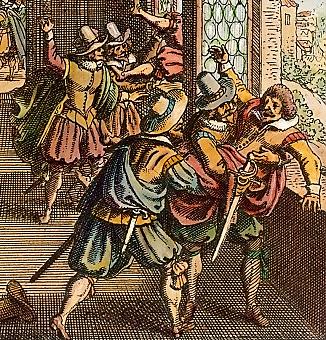
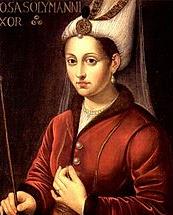
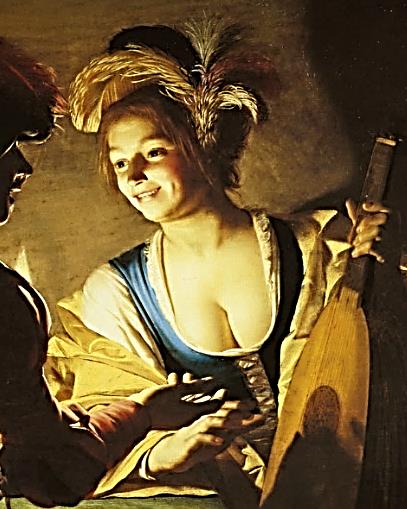
Although Henry and Francis were both dashing and charismatic, neither found love, whilst both Charles and Suleiman found life-long loves, with Suleiman raising his wife ‘Roxelana’, from slavery to the highest position in the land - Sultan.
The religious wars of the 16th C were to lead in the 17th C to the bigger European wide ‘Thirty Years War’, where 8 million were to die from war, famine and plague – equivalent to 80
million today. Great armies were formed and cities devastated as a Catholic South battled a Protestant North to finally form the Europe that we know today.
Finally, the ages of war were to cease and the Protestant Dutch Netherlands gained independence from Spanish Catholic rule. They achieved a time of great wealth, dominating Europe and even the Far East with the Dutch East India Company. This was the ‘Dutch Golden Age’ in art as artists flooded the market with paintings of all aspects of life, even romanticising that of prostitution.
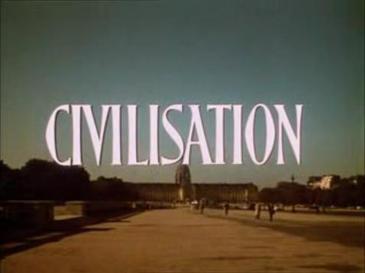
Sources of information
(1) https://www.adventuresinhistoryland.com/2014/11/13/what-wellington-said/
(2) https://www.historynet.com/rome-ravaged.htm
(3) https://www.britannica.com/topic/Spanish-Inquisition
(4) https://en.wikipedia.org/wiki/Field_of_the_Cloth_of_Gold
(5) https://www.rct.uk/collection/themes/trails/tapestries-in-the-royal-collection
(6) https://www.britannica.com/biography/Roxelana
(7) https://www.historyanswers.co.uk/medieval-renaissance/ottoman-super-cannon-the-bombard-that-built-an-
empire/
(8) https://www.en.wikipedia.org/wiki/Thirty_Years%27_War
(9) https://www.essentialvermeer.com/dutch-painters/dutch_art/ecnmcs_dtchart.html#.XXkIUChKiM8
A BBC series ‘Civilisation’, provides a history of art and society from the middle ages to the present day, over 13 episodes
https://www.youtube.com/playlist?list=PLXC6RzjHc2wugLza1kMWN_CRBuKRqQNTw
Books in this Series
Book 1 Egypt - Greece - Rome Empires come & Empires go 2 The Renaissance in Italy The Patron & The Artist 3 The Four Princes War, Terror & Religion 4 Northern Europe Revolution & Evolution 5 The American Dream Depression to Optimism
6 The Modern World The ‘..isms’ of Art
7 Past Voices Stories behind the Art All free e-book downloads
https://www.artystories.org
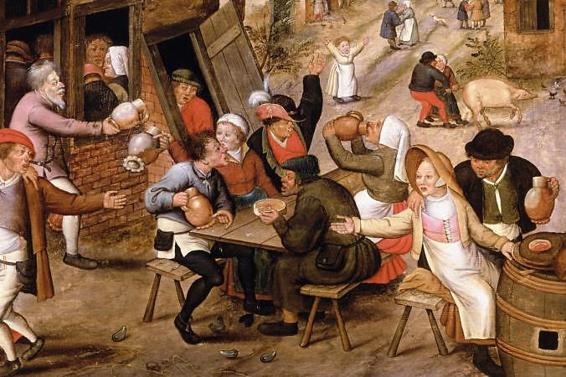
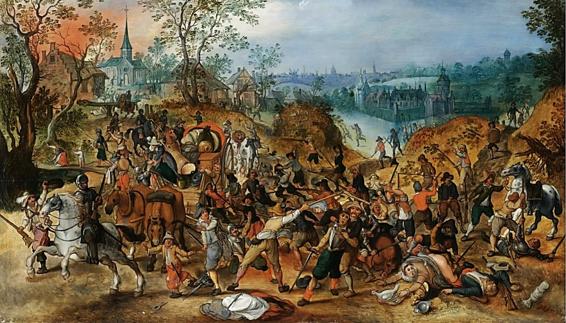
The history of life and art across centuries,
of changing societies and changing cultures.
‘I think the concept for your work is both
creative and engaging for young people.
The links between art, history, society
are clear in the outline you provide and
the opportunities to stimulate young people’s
interest and imagination are evident’.
Sir Nicholas Serota,
Chairman, Arts Council, England
Society makes art
and art defines society’s culture
‘Peasants Making Merry’, (detail), Breughel the Younger, 16th C
A Landscape with Travellers Ambushed, Sebastian Vrancx

















































